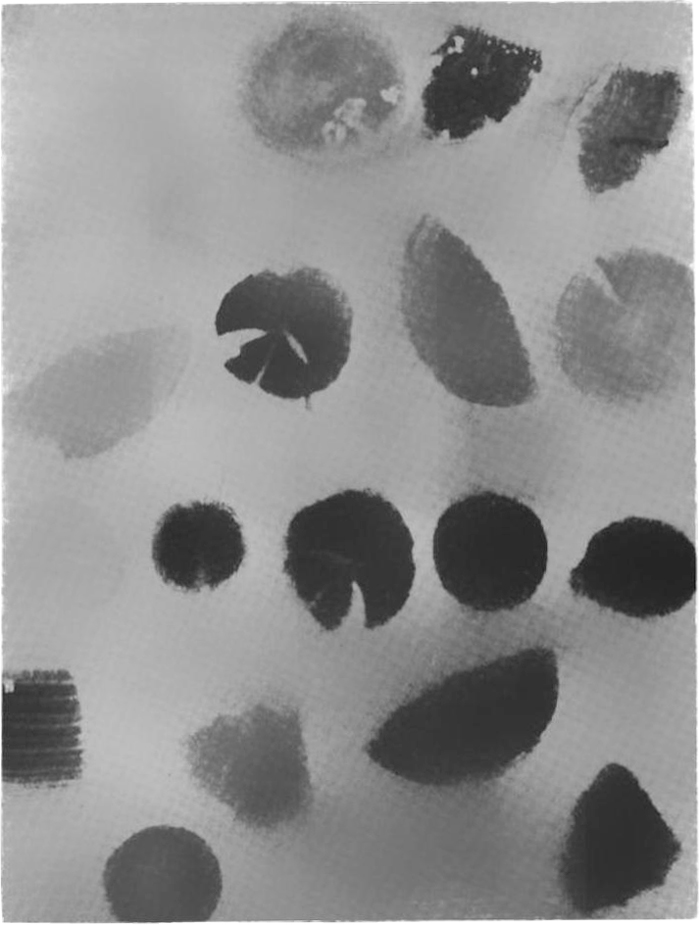charcoal, 3

Fig. 4
Images made by different specimens of charcoal on a photographic plate
ex Frederick J. Hoxie. “Spontaneous ignition studied by means of photographic plates.” Transactions of the ASME 38 (1917) : 841-856
—
“All charcoal is not alike, the difference appearing to be somewhat dependent on the completeness of the charring process, and apparently, to some extent, on the variation in the chemical components of the charcoal. The images shown in Fig. 4 were made up a Standard ‘Orthonon’ photographic plate by several samples of charcoal from a lot, which freshly burned had caused six fires in rapid succession from spontaneous ignition.”
“Freshly burned charcoal is known to be highly susceptible to spontaneous ignition, and the records of the Bureau of Explosives of the American Railway Association indicate that charcoal burned in the spring is more subject to this action than that burned at other seasons of the year.”
p 850
“C. P. Beistle (Bureau of Explosives, Am. Ry. Assn.) stated that charcoal made from beech, birch or maple was more liable to spontaneous ignition than that made from other woods. He thought the real cause of the risk in charcoal was due to the process rather than to the wood used. Most charcoal nowadays was made as a by-product of making wood alcohol and acetate of lime, and almost invariably retained a good deal of volatile material. Formerly, charcoal was burned anywhere from seven to fourteen days, and was very hard, very dense, and almost free from spontaneous heating.”
p 852
—
image from screengrab not pdf.
tags: charcoal; the seasons
F. J. Hoxie, “Spontaneous ignition” (1917)